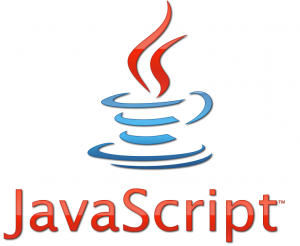is not a new name nowadays in information technology as it is the only easy way to handle with databases.
It is an efficient way of managing websites by using less energy and time. It has proper support system for new and
professional users and they can run it with training and practice. It can help in many ways and in many fields
including business, social networking websites containing bulk of data, and marketing large amounts of
storage data in finance.
For those candidates without prior experience, certifications will help prove to their employers that have the understanding
and skills required for job roles that demand knowledge of MySQL products. The certification is not a guarantee that you will
get the job, the certification will only improve your chances of getting the job.
For those candidates with experience, the certification will boost their resume and chances are, there will be something new that
you will learn.
With the title of
on your resume, you have proof
that you have mastered server-related issues, such as installing a server from scratch, keeping the server
running smoothly at all times, using the storage engine for a given task, analyzing the trouble spots of
other users queries and often helping users of MySQL products.
The examination can be taken at any
testing center worldwide.
The Database Administrator - Exam 2 consists in 70 multiple choice questions, exam duration is 90 minutes and the passing mark
is on 60%.
Section 1: Stored Routines (5%)

Using Stored Routines and Triggers for Security Purposes

Using Stored Routines to Enhance Performance
Section 2: User Management (20%)

User Account Management

Client Access Control
Section 3: Securing the Server (10%)

Security Issues

Operating System Security

Filesystem Security

Log Files and Security

Network Security

FEDERATED Table Security
Section 4: Upgrade-Related Security Issues (5%)

Upgrading the Privilege Tables

Security-Related SQL Mode Values
Section 5: Optimizing Queries (15%)

Identifying Candidates for Query Analysis

Using EXPLAIN to Analyze Queries

Using SHOW WARNINGS for Optimization

MyISAM Index Caching
Section 6: Optimizing Schemas (15%)

General Table Optimizations

Normalization

MyISAM-Specific Optimizations

InnoDB-Specific Optimizations

MERGE-Specific Optimizations

MEMORY-Specific Optimizations
Section 7: Optimizing the Server (10%)

Interpreting mysqld Server Information

Measuring Server Load

Tuning Memory Parameters

Using the Query Cache
Section 8: Interpreting Error Messages (5%)

Sources of Diagnostic Information

Using the Error Log for Diagnostic Purposes

Using The Slow Query Log for Diagnostic Purposes
Section 9: Optimizing the Environment (5%)

Choosing Hardware for MySQL Use

Configuring Disks for MySQL Use

Network Issues

Optimizing the Operating System for MySQL Use
Section 10: Scaling MySQL (10%)

Using Multiple Servers

Replication
















 Using Stored Routines and Triggers for Security Purposes
Using Stored Routines and Triggers for Security Purposes Using Stored Routines to Enhance Performance
Using Stored Routines to Enhance Performance User Account Management
User Account Management Client Access Control
Client Access Control Security Issues
Security Issues Operating System Security
Operating System Security Filesystem Security
Filesystem Security Log Files and Security
Log Files and Security Network Security
Network Security FEDERATED Table Security
FEDERATED Table Security Upgrading the Privilege Tables
Upgrading the Privilege Tables Security-Related SQL Mode Values
Security-Related SQL Mode Values Identifying Candidates for Query Analysis
Identifying Candidates for Query Analysis Using EXPLAIN to Analyze Queries
Using EXPLAIN to Analyze Queries Using SHOW WARNINGS for Optimization
Using SHOW WARNINGS for Optimization MyISAM Index Caching
MyISAM Index Caching General Table Optimizations
General Table Optimizations Normalization
Normalization MyISAM-Specific Optimizations
MyISAM-Specific Optimizations InnoDB-Specific Optimizations
InnoDB-Specific Optimizations MERGE-Specific Optimizations
MERGE-Specific Optimizations MEMORY-Specific Optimizations
MEMORY-Specific Optimizations Interpreting mysqld Server Information
Interpreting mysqld Server Information Measuring Server Load
Measuring Server Load Tuning Memory Parameters
Tuning Memory Parameters Using the Query Cache
Using the Query Cache Sources of Diagnostic Information
Sources of Diagnostic Information Using the Error Log for Diagnostic Purposes
Using the Error Log for Diagnostic Purposes Using The Slow Query Log for Diagnostic Purposes
Using The Slow Query Log for Diagnostic Purposes Choosing Hardware for MySQL Use
Choosing Hardware for MySQL Use Configuring Disks for MySQL Use
Configuring Disks for MySQL Use Network Issues
Network Issues Optimizing the Operating System for MySQL Use
Optimizing the Operating System for MySQL Use Using Multiple Servers
Using Multiple Servers Replication
Replication
